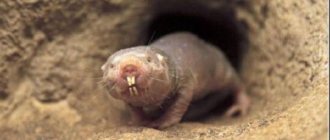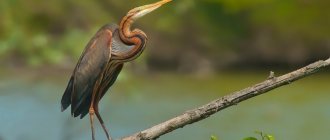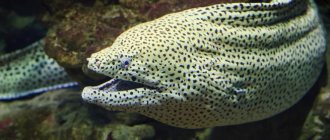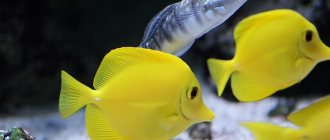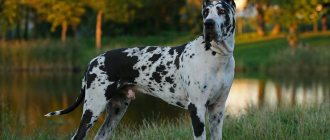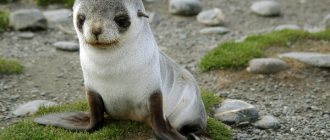The swamp is an interesting and creepy world, a kind of miracle of nature. In the minds of many people, at the mention of this word, scary pictures of green slurry pop up, which will immediately suck in an unexpected guest. From a scientific point of view, this is a piece of landscape that is a cross between a body of water and land. The type of soil here is not fertile, but rather it is not at all suitable for existence, but the swamps still have their own inhabitants.
Historically, this place has been associated with creepy stories, in which the main roles are played by mythical, malevolent creatures that should not be visited just like that. Of course, in reality, a swamp is far from a resort area, but instead of the mythical water creatures and kikimoras, the likelihood of encountering mosquitoes and frogs here is much greater.
Characteristics of the natural swamp area
A swamp is a specific part of the hydrosphere of our planet, therefore this type of landscape is characterized by special features. The term itself has Balto-Slavic roots and translated means swamp, dusk.
Location and climate features
The depths of the swamps contain about 15 thousand cubic kilometers of water. Surprisingly, this amount is six times the volume of water in all the world's rivers. Most of them are located on the territory of Russia - about 70%, and the total area on the planet is about 13 million km². Basically, swamps in Russia are located in the north, namely in its forest zone. The largest quantity can be found in the taiga and forest-tundra zone, in northern Karelia, and the Western Siberian taiga. In the southern direction their number is significantly reduced.
The climate of the area in which they are located is usually characterized by low precipitation and high evaporation.
Emergence
A swamp can relatively quickly go through the cycle of emergence - development - disappearance. This type of reservoir can form in the place of a meadow, a cleared forest, in a place where excess moisture forms, or in the place of a lake. The beginning of the emergence of many swamps is associated with the moment of change in climatic conditions - when the era of glaciation gave way to climatic conditions close to modern ones. The retreating glacier left behind a large number of depressions that had no outflow of water. Lakes formed in these places, and as animals and plants settled there and biological connections emerged between them, swamps formed there.
The charm of the swamp kingdom. Part one
When most people hear the word “swamp,” they have an image of something unclean, unpleasant, and repulsive. Gloomy non-residential spaces have long evoked feelings of dislike and hostility in people. The swamp kingdom was endowed with joyless epithets - deaf, disastrous, devilish, inhabited by all sorts of evil spirits, the souls of drowned people - after all, in the quicksand swamp (bugna) people and cattle often disappeared without a trace and strangely... Mysterious bluish lights, silent blue flashes, mournful cries of nocturnal animals, creeping fogs , the fantastic, whimsical silhouettes of driftwood gave birth to tales about insidious bagniks and their brothers the foresters, watermen, goblin and swamp kikimoras...
Swamp is different from swamp
In the minds of many of us, swamps are still a swell, a quagmire, and mud. But in reality this is far from the case. A person who is more or less close to biology puts a completely different meaning into this concept. For example, there are lowland swamps, which previously occupied a significant part of Polesie, and there are upland swamps, of which there are many in Poozerie.
There is no trace of a quagmire or spots of black water here. There is water, however. And it’s difficult to walk through without getting wet. And walking on soft moss without a habit is not easy. Sphagnum moss covers the entire space with a thick carpet, but you won’t find even a hint of dirt anywhere. And you can walk for a long time... Sphagnum moss, like a rubber sponge, absorbs moisture from the atmosphere. This is where the name of the bog comes from - raised, or sphagnum . Here you cannot get stuck in a quagmire, drown in a black abyss, unlike the treacherous lowland swamp . There are also transitional, or forest swamps .
And for each type of swamp there are its own plant communities, both forested and treeless: for lowland ones - forb-grass-sedge-hypnum; for transitional ones - shrub-sedge-hypnum-sphagnum; for riding - shrub-cotton grass-sphagnum.
In addition, in classical geobotany, based on the nutritional characteristics of plants (trophicity), swamps are divided into 3 large types: oligotrophic, mesotrophic and eutrotrophic. Oligotrophic swamps are considered the poorest in terms of flora species composition, and eutotrophic swamps are considered the richest.
Natural treasure
Of course, there are swamps and swamps in which you can drown, but, alas, nature cannot exist without these ecosystems. Their role is important and varied. Even M.V. Lomonosov predicted a great future for them. Over time, he said, “people will recognize the role that nature has assigned to swamps in the chain of its relationships, will see the diversity of values that it has enclosed in these pieces of its organism, and scientifically use them, taking into account the importance of each element.”
And, indeed, swamps are of great climatic and hydrological importance. These batteries and moisture regulators in the atmosphere accumulate precipitation, preventing its rapid and violent runoff. Giant reservoirs of fresh water supply rivers throughout the year, especially in winter and mid-summer when there is an acute shortage of water (all lowland rivers originate in raised swamps), give birth to mines, and regulate the level of groundwater. Ultimately, swamps maintain balance in many natural processes, creating their own microclimate without sharp temperature fluctuations. They also perform many other functions that we do not yet know about.
Swamps are the most important habitat for game birds, many valuable species of rodents, ungulates, and predators. Many medicinal and berry plants grow in these places. In addition, as is known, vegetation releases huge amounts of oxygen during photosynthesis, and sphagnum mosses absorb greenhouse gases. Therefore, the swamps are rightly called the “lungs of Europe”.
Safari in Belarusian
Swampiness has always been a distinctive feature of Belarusian nature, like the stork or bison, which are symbols of the country. Belarusians are the “people in the swamp”. Even Minsk itself was founded in a low, swampy place, where other peoples of the 11th century would not have set up even a temporary camp. The swamps protected them from enemies, fed them with game and berries, and treated them with medicinal herbs.
Time passed, and the swamps became storehouses of combustible fuel - peat. But the attitude towards these gloomy kingdoms in the world remained negative, even giving rise to a catchphrase, which, according to S.I. Ozhegov, means “a social environment in a state of stagnation, inertia.”
And only recently has this negativity begun to change for the better: it turns out that swamps are one of the attractions of our republic. It's no wonder that tourists from all over the world flock to us to see wildlife and enjoy natural scenery. And there really is something to see.
In the spring, when Mother Nature wakes up, these places are fabulously transformed, dressed in emerald greenery and once again covered with snow from the blooming wild rosemary and forest. In the summer they are full of sphagnum-grass carpet from soft green to red, in the fall they light up with a cranberry blush and gradually turn brown by winter. This riot of inflorescences is a delight to the eye. Just imagine: a viscous swamp stretches for several kilometers... And suddenly - islands of oak forests or pine forests sometimes grow in the middle of it! The air in such places is piercingly clean: you can’t breathe enough to breathe!
Virgin landscapes
Undrying, mosquito-infested and, what is much worse, midge-infested, these places, oddly enough, have a mysterious attractive force. They attract with crystal clear air, filled with the aroma of wild rosemary and pine, silence, the coolness of clean lakes and wild, untrodden paths. Anyone who has visited these wonderful lands at least once will remain enchanted by them for the rest of their lives, enjoying the secret charm of their discreet appearance and intoxicating aromas, imbued with the unknown and mystery. It is not surprising that so many truly poetic, lyrical images are inspired by the beauty of the swamp world!
On the approach to the swampy forest, the plants - pine, wild rosemary, blueberry, marsh myrtle (Cassandra), and podbel (andromeda) - become smaller, and in open places, where conditions are even harsher, they turn into miniature copies of their forest counterparts, and 100-150-year-old Pines grow here no taller than a man.
The vast swamp kingdom stretches for many kilometers. The landscape changes before our eyes: large swampy spaces alternate with narrow dry lands, enlivened by rich colors. Individual bushes of horsetails and club mosses form entire clumps. There are continuous thickets of common heather - a palisade of protruding thin stems, hung with garlands of white and pink bells framed by miniature leaves. Sandy ridges are greeted with an abundance of ripe lingonberries, blueberries are found in the lowlands, and cranberries are found on mossy hummocks.
Numerous creeks, quiet creeks, oxbow lakes, and backwaters, harmoniously complementing the lush greenery, outline the space in different directions with an intricate turquoise pattern. Somewhere on the horizon, in a bluish haze, you can see a floodplain forest of those tree species that have nevertheless adapted to grow in humid conditions - alder, oak, birch, spruce.
Vegetative landmarks
Walking through the swamp is difficult - every now and then you come across hollows and ripples. Feet sink into the soft wet moss carpet. If you step on the trail of the person walking in front, the bump may not stand, and you will fall through!
The ridges in the swamps are freely passable: they are well drained and rise above dangerous hollows; the latter are watered differently and this is judged by the plants. For example, green types of mosses that grow loosely, with only 20-50 stems per square decimeter, are just as dangerous as black spots of water.
The marshy shores of the lakes are surrounded by a border of thickets of the three-leaved marsh plant, so named because it seems to “keep watch” near places dangerous to humans, warning with pinkish-white flowers that there is no further progress. Although the plexus of lungs, permeated with air cavities, long and thick rhizomes floating on the water quite often create unsteady, but strong enough to support a person, false banks.
Knowledgeable people prefer to go to where marsh shrubs grow - wild rosemary, andromeda, cassandra. The depth of the water in these places does not exceed 20 cm. Or where at least individual stems of the vaginal forest are found. It’s good when its green hedgehogs are visible from afar thanks to the white fluffy boomboxes. These plants, fastening the moss turf with their roots, raise it up to 20 cm above the water, making it passable.
So, an expert in the ecology of the sphagnum mosses and bog plants growing here can calmly walk through such seemingly impenetrable swamps. A person who has no idea about swamps, mosses, shrubs and grasses would be completely helpless in such a place.
History of the swamps
No less attractive than the swamp kingdom itself is the history of the origin of these places. A swamp, unlike a forest, meadow, field, is formed gradually, from decade to decade, from century to century. Millennia pass until a real high-moor peat bog, or simply peat bog, is formed.
Raised bogs (usually with a peat thickness of 3-4 m) develop under conditions of very poor mineral nutrition. In contrast, lowland swamps arise on soils rich in minerals supplied by groundwater. Transitional swamps are often formed due to the overgrowing of water bodies poor in nutrients and lime. They combine the features of the previous types: they can have a carpet of sphagnum mosses and cranberries, as well as plants of lower bogs.
In Belarus, raised bogs arose approximately 10-12 thousand years ago after the retreat of the last Valdai glacier. But the swamp kingdoms reached their greatest prosperity in the so-called Atlantic period (5-8 thousand years ago), when the climate was wetter and warmer than now.
The Polesie swamps, for example, are about 11 thousand years old, the Yelnya swamp is 9 thousand years old. The Yelnya swamp is 3 thousand years younger, and the Vitebsk swamps are 5 thousand years younger. Here the swamps are much deeper - up to 9 m, and in Polesie their thickness most often does not exceed 1.5 m. The main peat formers are marsh plants: sphagnum, cotton grass, reed, Scheuchzeria, horsetail and tree species (pine, birch, less often spruce) .
Witnesses of the Ice Age
When the swamps began to form, the climate on Earth was harsh, arctic, and these places were inhabited by cold-loving plants and animals that live today in the north, in the tundra. Due to warming during the Atlantic period, southern species moved into Belarus, displacing the “northerners” who settled here after the retreat of the glacier. But still, many cold-loving species remained, having adapted to the living conditions in the raised bogs, surviving to this day.
Therefore, the Belarusian swamps are a kind of tundra islands in the center of Europe, and their inhabitants can rightfully be called witnesses of the Ice Age. These are relict species preserved from previous geological eras. Among them there are representatives of both fauna ( hare, white partridge, tundra satyr and others), and, to an even greater extent, flora: wild rosemary, common heather, cassandra, cloudberry, cranberry, blueberry, round-leaved sundew and many other plants .
Marsh rosemary
Common heather
Leaves float on the water, very similar to birch leaves. The same size, the same diamond-shaped shape, but the petioles are not birch at all, but thick, swollen. And the leaves don’t just float, but are collected in a rosette around an underwater stem. This is a water chestnut ( or chilim, rogulnik) - a relic and a red book.
White water lilies, round frog leaves, and elodea are swaying. And then you notice among them short branches with rounded leaves, similar to duckweed, but larger. Salvinia floating is a rare aquatic fern, not at all similar to these plants! It is always on the surface, which is why the name is floating. Lives in the Pripyat Valley: there is calmer flow and standing water. Usually its companions are the bullhead, the frogwort, the arrowhead, and the yellow egg capsule. It is considered a very ancient plant of Belarus - a relict of the last interglacial era, a period with a hot and humid climate. Listed in the Red Book of Belarus.
Another amazing plant is also found in our swamps - crowberry or crowberry, a rather rare “borderline” swamp-forest species. The stems of this evergreen shrub are covered with needles, somewhat reminiscent of spruce needles, only in miniature. The discreet, yellowish-green flowers bear fruit - black berries with an almost tasteless, watery juice.
Without much difficulty, by the light purple fragrant flowers collected in a paniculate inflorescence during flowering and especially during fruiting, and even in winter (by the remaining transparent partitions of the fruits) in the coastal swampy thickets of bushes, one can recognize the reviving moonflower, another “ancient” Red Book, preserved to this day.
Tree dwarfs
Unsightly pines and, less commonly, birches form large areas of low-growing forest in the swamps. Their height does not exceed 10 m. Even smaller representatives of woody vegetation are also found here. Try to find a dwarf birch in our forests! It grows in such impassable wetlands that you can’t even approach it. Moreover, it is found in small quantities, often mixed with squat birch, and never reaches the height of even large bushes, raising dark brown (reddish-brown when young) branches only 0.5-1 m, hardly higher. The catkins of this small bushy tree do not hang like those of birch trees, but stick out upward. The leaves, unlike the squat birch, are dark green, glossy, rounded, blunt at the top, and not oblong. In our republic, the dwarf birch , being a relict, lives in the most critical, as they say, extreme conditions.
A resident of sedge-sphagnum swamps, the relict
blueberry willow
occurs singly or in small groups, rising to a height of up to 30-80 cm. Yellow or red-brown shoots extend from the gray stems of the bush, with fluff in the upper part, decorated with small matte green ones below bluish leaves and loose catkins. Two other rare red-listed species of trees in these places are also under protection - low birch and Lapland willow, or Lappish willow.
The ancestors of the relics are the first settlers of the periglacial plains, reminiscent of the current tundra. And in these harsh conditions they were able to survive, preserving the unique biodiversity of the swamps, especially the upland swamps. Where else in the very center of Europe can you see what our Earth was like more than 10 thousand years ago?
Relatively few wetlands remain in their natural state; European countries have long since drained their swamps. And only in Belarus it is not only the forests that are noisy. Despite the Soviet era of active drainage of swamps, unique undrained swamp massifs have been preserved in our republic, the area of thousands, even tens of thousands of hectares. Some of them are under state protection.
The world of mosses, sedges, grasses...
A soft green cover covers a multimeter thick layer of peat like a continuous carpet. The main species in the ground cover are sphagnum mosses, of which there are up to 20-25 species, two of which are included in the Red Book of Belarus (soft sphagnum and Lindbergh sphagnum) and two more (beautiful sphagnum and tiled sphagnum) require preventive protection.
A lush emerald blanket of sphagnum mosses with its variegated patterns enlivens the mostly modest, unpretentious marsh plants. Such as cereals, rushes, sedges, fragrant calamus, as well as evergreen shrubs - swamp myrtle (cassandra), white rosemary (aka andromeda), wild rosemary with an intoxicating smell and white cotton balls of cotton grass. In addition, the “blooming” of the mosses themselves is in itself a very interesting moment in the life of swamps.
Along with mosses, sedges (yellow sedge, black sedge, bladder sedge, and others) predominate on the spreading marshy plains. Most species of sedges grow in the coastal zone of swamps. In the composition of the grasses of moss bogs, sytaceous ones account for a large percentage. A number of them are taken under state protection ( Hosta bay sedge, Davell's sedge, Buchsbaum's sedge, pauciflorous sedge, marsh-loving sedge and others) .
The most common among the common ones is marsh sedge . It fully justifies its name, as it grows in the most swampy and unsteady places. Where it turns green, you need to step carefully, otherwise you may fall through. Its constant companion is Scheichzeria marsh. During the growing season it is an inconspicuous plant, but after flowering its perianth grows strongly and the seeds are placed in bubble-like swollen sacs.
Occasionally found, often in communities with species of the cuckoo flax genus, rare shrubs and self-seeding pine and birch trees, another lover of standing water is the Red Book club moss Lycopodiella inundated, or inundated club moss. A perennial herbaceous plant with creeping branched vegetative shoots up to a meter long, studded with small green leaves with straw-yellow tips.
Common inhabitants of swamps are such unpretentious plants as horsetail , as well as broad-leaved cattail, common reed and forest reed . The last three representatives of the swamp flora are constantly confused with each other: although cattails are not even related to reeds and reeds. These three inseparable friends often form thickets near the banks of reservoirs up to two meters high. Their highly branched root system compacts the soil, and their fairly elastic stems and leaves help dampen waves, thereby protecting the coast from erosion, as if acting as a natural breakwater.
Photo by the author
Share on social media networks:
Previous Next
Animals
At first glance, it may seem surprising that swampy areas are home to many inhabitants. But it is worth noting that many of them are not permanent, and, for example, spend only a season there. But some people live in this area permanently.
Waterfowl
Many people know a little about who lives in the swamps. Perhaps the most famous inhabitants of swamps are frogs. Some experts absolutely sincerely consider these animals to be one of the most beautiful creatures in the world. This is due to the uniqueness and originality of their body structure. It is regular in shape, small, symmetrical. Frogs have no neck, and their heads are very large and wide. Modern science knows about 6,000 species of these animals.
Karavayka
Like all swamp birds, it has elongated legs, neck and beak. Their elongation helps them wander through the water, dip their heads into it, and capture food in the stream.
The beak of the loaf is curved in the shape of an arc. This is a distinctive feature of the bird. The length of its beak reaches 12 centimeters.
Systematically, ibis are swamp birds belonging to the order Ibisidae. It is included in the stork family.
The size of the loaf is slightly larger than a crow. The bird's plumage is chestnut from the head to the middle of the body and brown to the tail. In the light there is a metallic tint, tints of green, black, and bluish colors.
The distribution of loaves is wide. There are no representatives of the species only at the poles. Migratory birds settling in temperate zones. Other loaves lead a sedentary lifestyle.
Vegetable world
Swampy areas are characterized by high humidity, which means that different types of moisture-loving vegetation can be seen here. The surface of many swamps is densely covered with moss called sphagnum. This marsh plant has the ability to kill microbes, so the remains of dead organisms are not completely processed, but accumulate under a layer of moss, forming peat. The thickness of the peat layer can be up to four meters.
Ledum is another representative of the flora of marshy areas, where it often forms dense thickets. Ledum is used in folk medicine; its young shoots and flowers are most often collected.
The most famous plant that can be found in wetlands is the cranberry. This berry is widely used - it can be eaten fresh, in the form of jam, or frozen. Cranberries are believed to be extremely beneficial for colds.
The calamus plant is also familiar to many. Calamus has a horizontal rhizome, from which xiphoid leaves emerge. The stem of the plant is triangular and forms an arrow. At the top of the stem there is a thick inflorescence in the form of a cob. It has a cylindrical shape, slightly narrowed towards the end, and is covered with small yellow-green flowers.
How to get there
The swampy location makes it difficult for nature lovers to access. The nearest large cities are Tomsk and Novosibirsk. It is better to travel with a personal vehicle such as an SUV. From Tomsk you need to take the M53 highway, heading to the village of Orlovka. You can get to the place using the services of suburban buses.
Travelers planning a trip to the Vasyugan swamps must seriously prepare: take maps, think over the route, have a satellite connection with them, and arrange for an escort with one of the local residents. The area is dangerous for walking: encountering wild animals, the possibility of getting lost, getting stuck in a quagmire.
Types of swamps
It is customary for experts to classify swampy landscapes according to various criteria.
According to the main classification (by type of nutrition) they are:
- Lowland - their nutrition is quite rich and comes from groundwater. They are located in lowlands: floodplains, on the shores of lakes.
- Transitional - the nutrition is moderate, so the vegetation is not as rich as in lowland swamps.
- Raised (oligotrophic) - these reservoirs are fed only by precipitation, which contains few minerals, so the water here is highly acidic. The vegetation is very sparse, mostly containing only shrubs.
Raised bogs are of two types: forest (here there is growth of moss and heather) and ridge-hollow (covered only with peat).
Tritons
The order of tailed amphibians is represented by salamanders and newts. If the former are mainly land creatures, then the newts are precisely the animals of the swamps. Outwardly, these creatures are somewhat reminiscent of lizards, only their skin is smooth and moist, and their tail is vertically flat (like a fish). The body of newts has an elongated and spindle-shaped structure. Their small head immediately turns into a body, which also imperceptibly turns into a tail.
Most newts live permanently in the swamp, spending most of the year there. At the same time, they lead a secretive lifestyle. It is almost impossible to see a newt in the wild with the naked eye! They are wonderful swimmers, but on the shore they are completely helpless creatures. Representatives of the order of tailed amphibians are sedentary animals, attached to their native home - the swamp. They are inactive and completely unsuited to long journeys.
Education
Swamps can arise in two main ways (depending on the soil on which it is formed): swamping of the soil or overgrowing of a reservoir.
The formation of a swamp as a result of waterlogging of the soil
This is the main way. At first, waterlogging occurs periodically, then - constant excessive moisture of the land.
There are several factors contributing to soil waterlogging:
- Climate - excessive moisture due to high precipitation and low evaporation.
- Features of the soil - the predominance of poorly permeable rocks, fused rocks at fire sites, high groundwater levels.
- Features of the relief - slow flow of water due to the plane of the land.
- River floods.
Excessive amount of moisture in the soil leads to the death of the forest, and moisture-loving vegetation and sphagnum moss appear in this place. Moss absorbs moisture, which leads to waterlogging in the area. Vegetation, dying, forms peat.
Formation of swamps as a result of overgrowing of water bodies
Overgrowing of a reservoir occurs in the following way: mineral and organic soil particles constantly enter and accumulate in the lake, which gradually causes the reservoir to become shallow. Additionally, this is facilitated by deposits of dying plants.
Ecological problems
Currently, there is a development of negative processes associated with excessive and destructive use of swamps.
These processes include:
- pollution,
- mass extraction of peat,
- abstraction of water from the ground.
Violation of the hydrological regime during the construction of roads, various structures, gas and oil pipelines also plays an important role in destructive processes.
Frequent uncontrolled fires of peat bogs are associated with their drainage, which also leads to a loss of diversity in the biological world.
Meaning
Swamps are an integral part of the hydrosphere of our planet.
As a full-fledged part of the biological world, these reservoirs are of great importance:
- A large number of river tributaries, streams and small rivers originate in raised swamps.
- Swamps, like forests, play the role of the lungs of our planet. Their vegetation is capable of enriching the atmosphere with oxygen and absorbing carbon dioxide.
- A body of water influences the climate of the area where it is located.
- Peat, found in large quantities in wetlands, is capable of absorbing harmful elements, and is also a valuable mineral.
- The swampy pond has mummifying properties, so it is extremely useful for scientists.
- Many birds live here, and this is the best option for existence for them.
- The swamp is a place where plants valuable for pharmaceuticals grow.
Interesting Facts
Many superstitious people describe with horror one of the phenomena associated with the wetland: in the summer, at night, you can see blue flickering lights that seem to dance and tease the observer. Some people believe that in this way they can observe the souls of the unfortunate people who were sucked into the cursed swamp. However, there is a scientific explanation for this fact, and more than one: the combustion of gas released from the swamp, as well as the glow of plants collapsing from rotting, phosphorus or methane.
It is worth noting that scientists have not been able to recreate such glows under artificial conditions and work on this issue is still underway, so lovers of fairy tales and superstitions still have the right to their point of view.
Swamp water contains high concentrations of peat acids. In such an environment, organic bodies decompose very slowly. This factor, coupled with low oxygen content and low temperatures, has a tanning effect on human skin, so the bodies of people and animals drowned in the quagmire are perfectly preserved.
For example, in the swampy backwaters of Europe, many human remains were found, which experts dated to periods before our era. One of the amazing finds is the mummy of the Tollund man: amazingly, his head is so well preserved that even wrinkles can be seen on his face.

